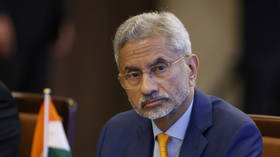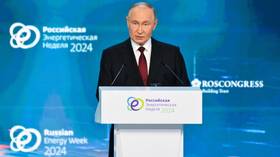India looking for dollar ‘workarounds’ – foreign minister

New Delhi is looking to secure its interests and find “workarounds” in settlements with global partners, including Russia, as Washington complicates trade, Indian Foreign Minister Subrahmanyam Jaishankar has said. He clarified, however, that India has no intention of moving away from the US dollar.
Speaking on Tuesday at an event at the Carnegie Endowment for International Peace, a Washington-based think tank, Jaishankar noted that India has “no malicious intent towards the dollar” and that targeting the greenback is not part of India’s “economic, political, or strategic policy.” He emphasized, however, that “sometimes you [the US] make it difficult to use the dollars. We have trade partners with whom trade becomes difficult because of your policies. We have to obviously look for workarounds.”
The diplomat predicted that the current trend toward multipolarity in global affairs world will eventually be reflected in “currencies and economic dealings.”
Jaishankar also stated that India’s “natural concern” is that its close trade partners often lack dollar reserves. “So, we must decide whether to forgo dealings with them or find an alternative settlement that works,” he added.
Several of India’s neighbors, including Bangladesh, Sri Lanka, and Nepal, have seen their foreign exchange reserves dry up, with their ability to import essential commodities suffering in recent years due to acute shortages of dollars.
US sanctions against Iran have posed problems for Indian tea and rice exporters, which once enjoyed a large market share in the country, the Indian Express noted.
India’s trade with Russia, which has emerged as New Delhi’s largest supplier of energy resources, defense systems and fertilizers, among other items, has also been disrupted due to US-led sanctions against Moscow over the Ukraine conflict.
That includes Russia being switched off from the SWIFT international banking system, which has prompted Moscow and many of its trade partners to shift to alternative payment mechanisms, many of which were discussed long before the current Western restrictions. Russian President Vladimir Putin stated in September that Russia is already actively switching to the use of national currencies in trading with BRICS countries, and that the group’s members are jointly developing a payment and settlement framework to be used for trade.
Russia and China have increasingly conducted transactions in rubles and yuan, and bilateral trade last year crossed $200 billion. India and Russia have also increased the use of national currencies in trade.
India has significantly boosted transactions with Russia despite constant scrutiny from the West, with bilateral trade surpassing $60 billion last year for the first time. During Indian Prime Minister Narendra Modi’s visit to Russia earlier this year, the two nations resolved to increase their trade volume to $100 billion by 2030.














